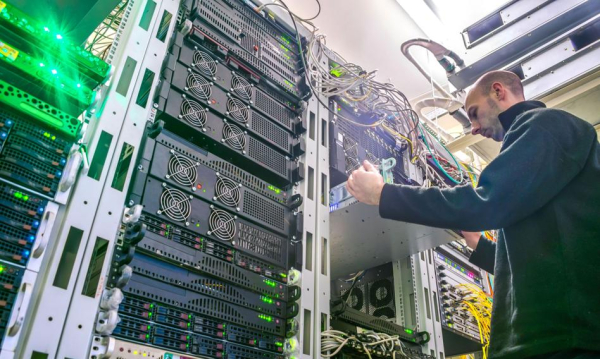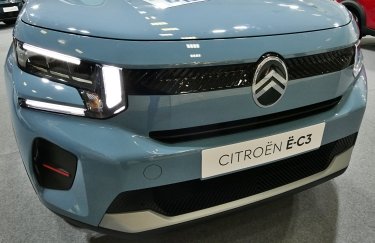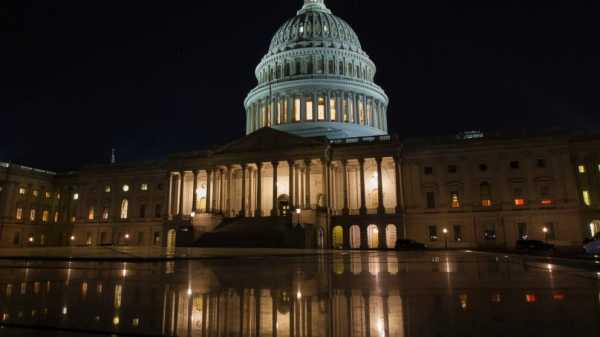Data centers are one of the dynamically developing, but also energy-intensive sectors of the economy. PMR forecasts indicate that by 2030, operators in Poland will have data centers with a capacity exceeding 500 MW, which means that it will increase more than three times compared to 2024. Accelerated digitalization and the dynamic development of artificial intelligence mean that in the next few years, electricity consumption in data centers in Europe alone will increase by 66%. That is why more and more companies are reaching for sustainable solutions and energy from renewable sources.

– The prospects for the development of data centers in Poland are enormous. They will be driven by the demand for increasing computing power and AI solutions available locally in Poland – says Tomasz Sobol, Marketing Development Manager CEE at OVHcloud, in an interview with the Newseria agency.
According to PMR data, in 2023 the total capacity available on the commercial data center services market in Poland was almost 173 MW. The previous three years brought a doubling of capacity resources, and 2023 was a record year with a dynamics of 43%. PMR forecasts indicate an almost tripling of the capacity of the Polish data center market in 2024-2030, from 173 MW to over 500 MW. This increase will be greater than the increase in the net area of data centers would suggest.
– Data centers will increase their surface area for various types of computing needs for the end customer. This will be used for various types of calculations, especially since Poland is becoming digital, increasingly using Internet of Things solutions that generate a growing amount of data. This data is processed at the edge, but it is the data centers that are responsible for the largest part of the calculations. Business generates more and more of them, so data centers will develop – explains Tomasz Sobol.
As PMR points out, Poland is a significant data center hub in the Central European region and by far the largest and most dynamically growing market. The Polish market is already home to leaders in the global data center market, hyperscalers, and financial players (funds and banks investing in the industry). In 2023, the ratio of leased space to available space for the entire market was higher for the largest facilities than the market average for the first time.
– We are the easternmost bridgehead and the data centers located in Warsaw and Krakow process a huge amount of data for clients from the CEE region, but also Western Europe and the USA. We are already an attractive hub, as can be seen from the investments of players from America, but European players, such as OVHcloud, are also investing in this market. Eastern Europe has huge growth potential, as can be seen from the number of start-ups – the OVHcloud expert convinces.
It is estimated that a simple Google search consumes about 0.3 MWh of electricity. An operation using the ChatGPT program already consumes between 1.8 and 3 MWh. The development of artificial intelligence is therefore causing a large increase in energy demand from data centers. A report by the International Energy Agency predicts that demand worldwide will more than double by 2030 to about 945 terawatt-hours (TWh), and in Europe alone it will increase by 66 percent to 113 TWh. This means that the energy infrastructure must adapt to the new requirements.
– To make data centers green, a lot of things need to be done, starting with making sure they don't consume as much energy as they do now. Right now, the challenge for architects who design data centers is how to build a facility that consumes as little electricity as possible – says Tomasz Sobol.
The industry average Power Usage Effectiveness (PUE), which measures the ratio of total energy used by computers to the energy supplied to them, is currently 1.56, compared to 2.5 in 2007. By reducing the number of IT components used, introducing innovations for more efficient cooling systems, including liquid cooling, and obtaining energy from renewable sources, OVHcloud has reduced this PUE to 1.26.
– The policy that is being implemented by most data center providers, including our company, is to obtain green energy, i.e. from photovoltaics, wind farms and – if possible – from nuclear power. Although we do not have such a power plant in Poland yet, OVHcloud is a global company and in France we also use nuclear energy – indicates the OVHcloud expert.
Some European data center service providers and cloud platforms joined the Data Center Climate Neutrality Pact in 2021. It assumes that by 2030, data centers are to use 100% renewable energy sources, and newly built data centers in cold climates must achieve a PUE efficiency of 1.3 and in warm climates – 1.4.
– At OVHcloud, we have developed a three-level low carbon footprint strategy: scope 1, scope 2 and scope 3. We care about the lowest carbon footprint in electricity consumption, a closed system for server production and operation, and the recovery of components for reuse. In our company, we cool servers with liquid in a closed system to use this resource as little as possible – explains Tomasz Sobol.
The development prospects of the data center market were one of the topics of the European Economic Congress, which took place last week in Katowice.






